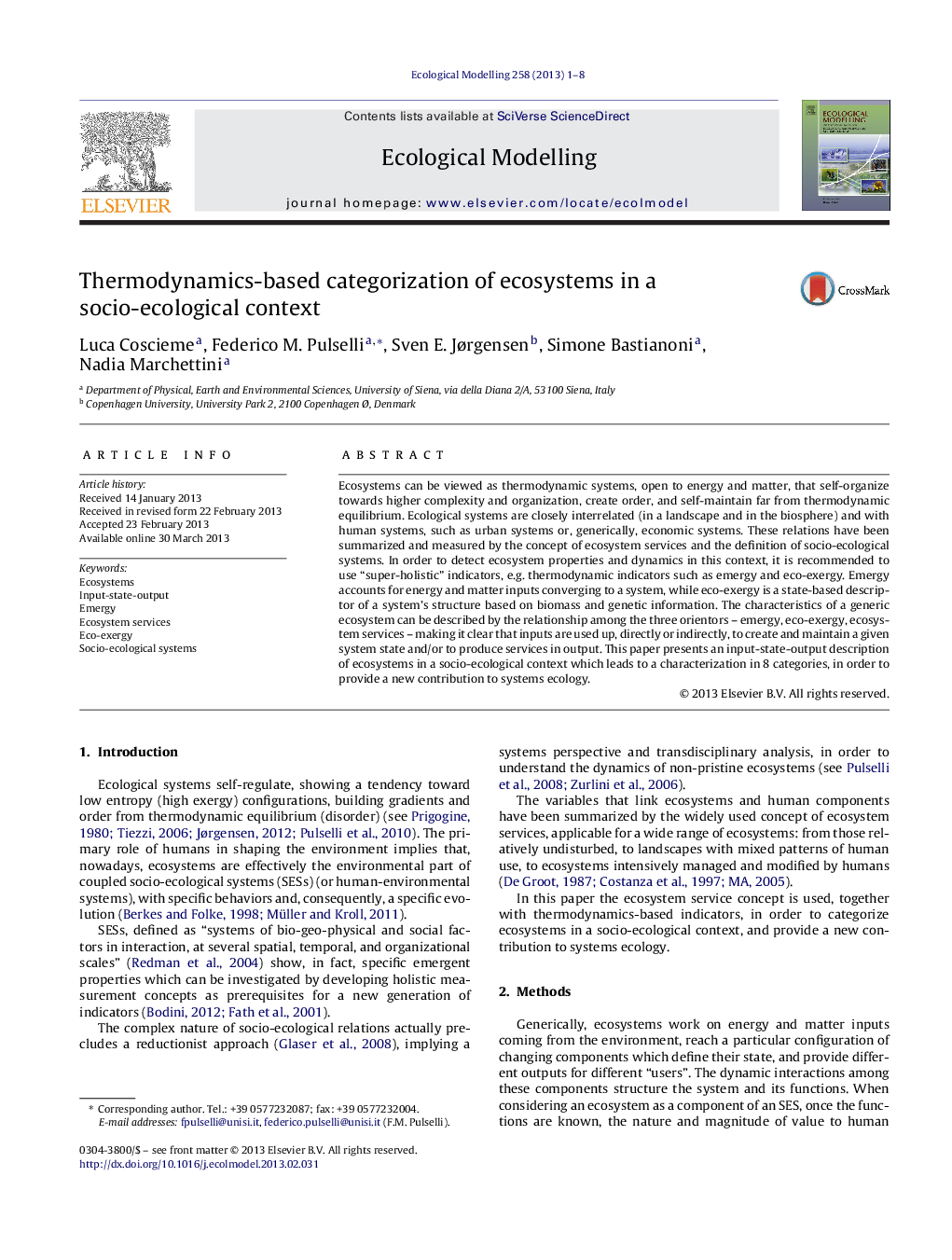| Article ID | Journal | Published Year | Pages | File Type |
|---|---|---|---|---|
| 4376099 | Ecological Modelling | 2013 | 8 Pages |
•Holistic indicators, e.g. thermodynamics-based ones, are used to describe ecosystems.•The combination of emergy, eco-exergy and ecosystem services value is analyzed.•Ecosystems are categorized through a 3D input-state-output scheme.•8 categories are identified to include global ecosystems.•An evolutionary path for ecosystems in a socio-ecological context is hypothesized.
Ecosystems can be viewed as thermodynamic systems, open to energy and matter, that self-organize towards higher complexity and organization, create order, and self-maintain far from thermodynamic equilibrium. Ecological systems are closely interrelated (in a landscape and in the biosphere) and with human systems, such as urban systems or, generically, economic systems. These relations have been summarized and measured by the concept of ecosystem services and the definition of socio-ecological systems. In order to detect ecosystem properties and dynamics in this context, it is recommended to use “super-holistic” indicators, e.g. thermodynamic indicators such as emergy and eco-exergy. Emergy accounts for energy and matter inputs converging to a system, while eco-exergy is a state-based descriptor of a system's structure based on biomass and genetic information. The characteristics of a generic ecosystem can be described by the relationship among the three orientors – emergy, eco-exergy, ecosystem services – making it clear that inputs are used up, directly or indirectly, to create and maintain a given system state and/or to produce services in output. This paper presents an input-state-output description of ecosystems in a socio-ecological context which leads to a characterization in 8 categories, in order to provide a new contribution to systems ecology.
Graphical abstractFigure optionsDownload full-size imageDownload as PowerPoint slide
